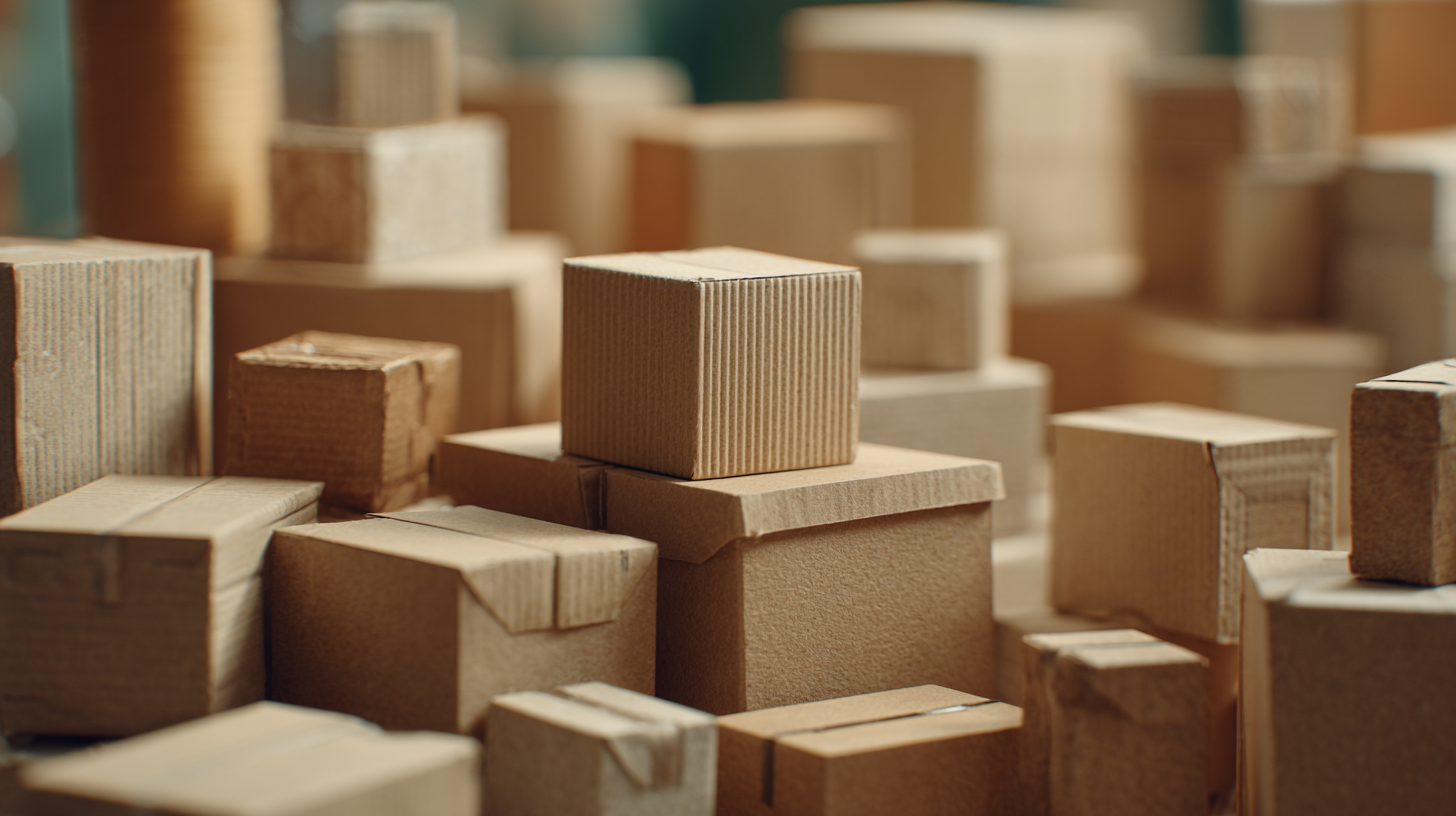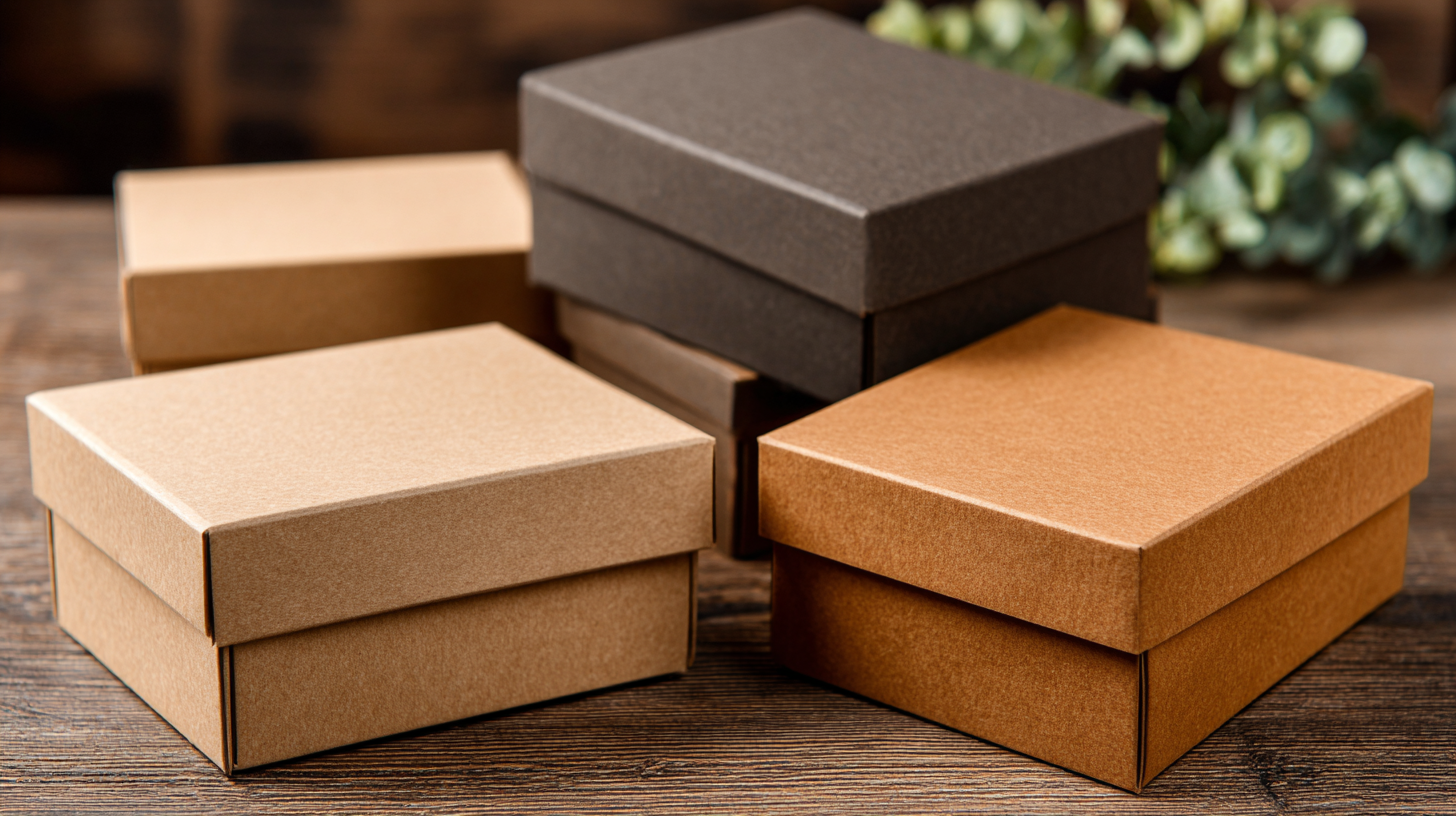As environmental concerns continue to rise, the packaging industry is undergoing a significant transformation, particularly in the realm of eco-friendly box packaging. According to a report by Smithers Pira, the global sustainable packaging market is expected to reach $500 billion by 2024, driven by increasing consumer demand for sustainable materials and practices. The use of recyclable, biodegradable, and renewable resources in box packaging is not just a trend; it’s becoming an industry standard. With major companies committing to reduce their carbon footprints, innovations such as compostable materials, water-based inks, and reduced packaging weight are becoming increasingly prominent. This evolution reflects a broader shift toward sustainability that not only meets consumer expectations but also addresses regulatory pressures, indicating that businesses must adapt or risk falling behind. As we explore the future of eco-friendly box packaging, it is clear that the integration of innovative practices will shape not only the industry but also our planet’s health.

The shift towards sustainable materials in box packaging is reshaping the industry, driven by growing environmental awareness among consumers and businesses alike.
 Paper packaging has gained popularity as a viable alternative to plastic due to its recyclability and lower carbon footprint. The global paper packaging market is expected to witness significant growth, projected to reach $394 billion by 2030, emphasizing the importance of eco-friendly solutions in meeting consumer demands.
Paper packaging has gained popularity as a viable alternative to plastic due to its recyclability and lower carbon footprint. The global paper packaging market is expected to witness significant growth, projected to reach $394 billion by 2030, emphasizing the importance of eco-friendly solutions in meeting consumer demands.
Tips for businesses looking to transition to eco-friendly box packaging include collaborating with suppliers who prioritize sustainable practices and materials. Additionally, exploring innovative designs that reduce material waste can enhance both functionality and aesthetic appeal, making products more attractive to environmentally conscious consumers. Education and transparency about the sustainability benefits of packaging choices can further strengthen brand loyalty and consumer trust.
As the landscape continues to evolve, organizations must stay ahead of trends and innovations in eco-friendly packaging. By investing in research and development, businesses can create cutting-edge solutions that not only meet regulatory requirements but also resonate with the values of a growing segment of eco-aware consumers. Embracing these changes will not only help combat plastic pollution but also position companies as leaders in sustainable practices within their industries.
The recent shift towards eco-friendly packaging reflects a growing recognition of environmental sustainability and consumer preference for recyclable materials. With the global recyclable flexible packaging market projected to expand significantly from 2024 to 2034, the industry is experiencing an accelerated push for innovative design solutions. Companies are increasingly focusing on enhancing recyclability through advanced materials and technologies. For instance, the introduction of new polyethylene technologies aims to improve the mechanical properties and sealing functionalities of packaging, thereby facilitating design for recycling.
Moreover, innovations such as the development of smart labels are paving the way for a sustainable future in packaging. Recognized for their recyclability, these smart labels represent a breakthrough for plastic packaging producers aimed at enhancing product lifecycle management. In light of stringent regulations, including the European Union's mandate that all packaging must be reusable or recyclable by 2030, brands are under pressure to adopt these innovative solutions. The focus on creating paper-based and recyclable samples further epitomizes the industry's commitment to reducing plastic dependency while meeting consumer and regulatory demands.

In recent years, consumer preferences have significantly influenced the trajectory of eco-friendly packaging trends within the industry. According to a report by Smithers Pira, the global market for sustainable packaging is expected to reach $1 trillion by 2027, driven by a growing demand for environmentally responsible solutions. This shift is partly due to the increasing awareness among consumers regarding plastic waste and its impact on the environment, with studies indicating that over 60% of consumers are willing to pay more for products packaged in eco-friendly materials.
Moreover, brands are responding to this shift by innovating in their packaging designs and materials. A recent survey by Nielsen revealed that 74% of consumers are willing to change their shopping habits to reduce environmental impact, pushing companies towards biodegradable and compostable options. The rise in popularity of materials like mushroom packaging, recycled paper, and plant-based plastics reflects this consumer-driven demand for sustainability. As a result, companies that prioritize eco-friendly packaging not only enhance their market appeal but also contribute to a more sustainable future, proving that consumer preferences are a powerful catalyst for industry transformation.
The shift towards sustainable packaging practices has largely been influenced by a range of regulatory measures aimed at reducing environmental impact. As governments worldwide tighten regulations on plastic use, companies are compelled to adopt eco-friendly packaging solutions. According to a recent report by Smithers, the global sustainable packaging market is projected to reach $600 billion by 2027, driven by regulatory compliance and consumer demand for greener options. Regulations such as the European Union's Single-Use Plastics Directive not only target the reduction of single-use plastics but also encourage innovation in materials that are biodegradable or recyclable.
While navigating these regulatory landscapes, businesses can leverage strategic partnerships with local recycling facilities and invest in research to develop new materials that will comply with forthcoming regulations. The Ellen MacArthur Foundation reported that transitioning to a circular economy could generate $4.5 trillion in economic benefits by 2030. By remaining ahead of the curve on regulatory trends, companies can transition towards more sustainable practices while capitalizing on market opportunities.
**Tips for Implementation:**
1. Stay updated on regional regulations concerning packaging materials to ensure compliance.
2. Invest in employee training programs focused on sustainability to embed eco-friendly practices in your company culture.
3. Collaborate with suppliers who prioritize sustainable initiatives to enhance your packaging supply chain.
The eco-friendly box packaging industry is undergoing a significant transformation driven by future technologies. Innovations like digital printing, biodegradable materials, and automated manufacturing processes are at the forefront of this revolution. According to a recent report by Smithers Pira, the market for sustainable packaging is projected to reach $500 billion by 2024, with eco-friendly packaging solutions capturing an increasing share of consumer attention. This shift reflects a growing commitment from companies to meet environmental standards and consumer demand for sustainable options.
One of the most promising advancements is the development of bio-based materials that are both functional and sustainable. Recent studies indicate that the use of such materials could reduce carbon footprints by as much as 50%. Furthermore, technologies like 3D printing are enabling more efficient production processes, minimizing waste while allowing for innovative designs that reduce the volume of material needed. As these technologies continue to evolve, they promise to deliver not only environmental benefits but also cost-efficiency, ultimately reshaping the landscape of the packaging industry.






